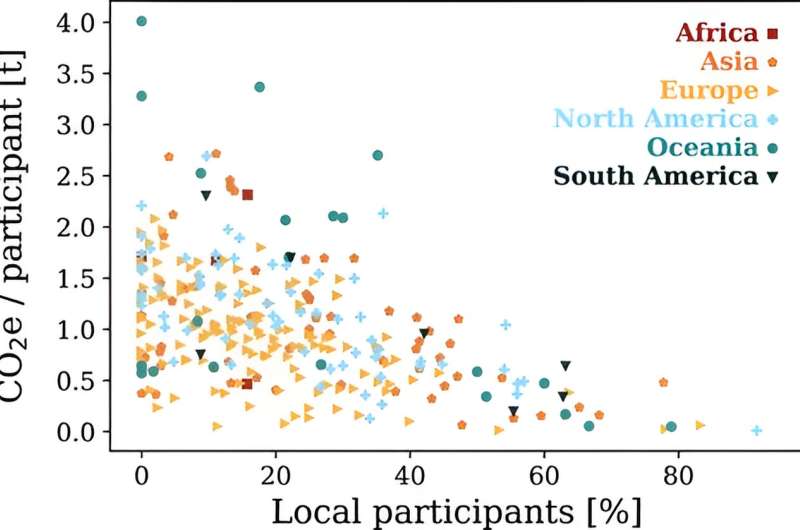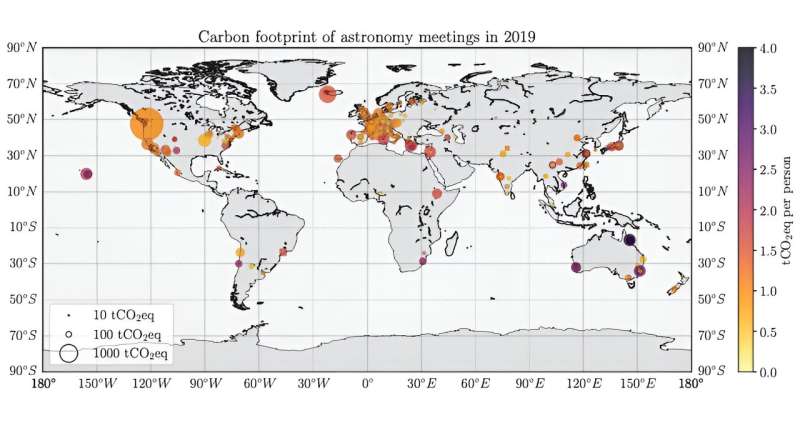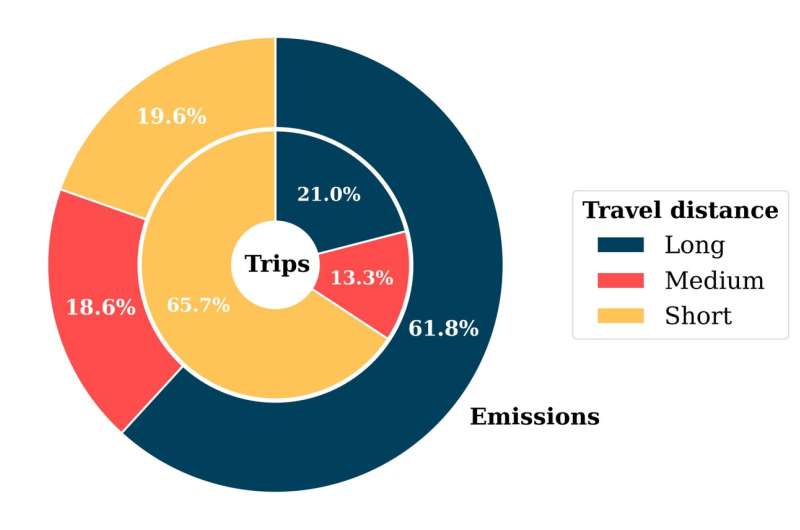This article has been reviewed according to Science X's editorial process and policies. Editors have highlighted the following attributes while ensuring the content's credibility:
fact-checked
peer-reviewed publication
trusted source
proofread
Astronomers significantly impact the climate by traveling to conferences, say researchers

In 2019, global travel to international academic conferences in the field of astronomy caused the equivalent of 42,500 tons of climate-damaging CO2 emissions. This equates to an average of one ton of CO2 per participant and conference. The total distance covered adds up to a truly astronomical sum: one and a half times the distance between the Earth and the sun.
This was discovered by a team led by Dr. Andrea Gokus from Washington University in St. Louis (U.S.). The researchers compiled a data set of all 362 known astronomy conferences in 2019 and the corresponding travel emissions. PD Dr. Volker Ossenkopf-Okada from the University of Cologne's Institute for Astrophysics contributed to the data analysis.
The study "Astronomy's climate emissions: global travel to scientific meetings in 2019" has now been published in PNAS Nexus.

The authors emphasize the importance of networking as well as discussing new scientific findings at conferences to advance the field. However, adjustments can and must be made to reduce the effects on the climate. Examples include virtual conferences or choosing a conference venue that is as close as possible to most participants so that only a few participants have to take long-distance flights.
It is also important to give astronomers who are based far away from North America and Europe, where most astronomy conferences take place, the opportunity to attend the conferences. The authors propose hybrid formats and meetings held at several locations that are connected virtually.

"If the 2019 American Astronomical Society meeting in Seattle had been held at four global hubs (Seattle and Baltimore in the U.S., Amsterdam in the Netherlands, and Tokyo in Japan), CO2 emissions could have been reduced by 70 percent," explained Gokus.
"Virtual and hybrid conference formats would also be more inclusive and thus more efficient for our field as a whole, as astronomers from less affluent institutes and countries and those with family duties would no longer be excluded from conferences due to the expensive and time-consuming travel," said Ossenkopf-Okada.
More information: Andrea Gokus et al, Astronomy's climate emissions: Global travel to scientific meetings in 2019, PNAS Nexus (2024). DOI: 10.1093/pnasnexus/pgae143
Journal information: PNAS Nexus
Provided by University of Cologne




















